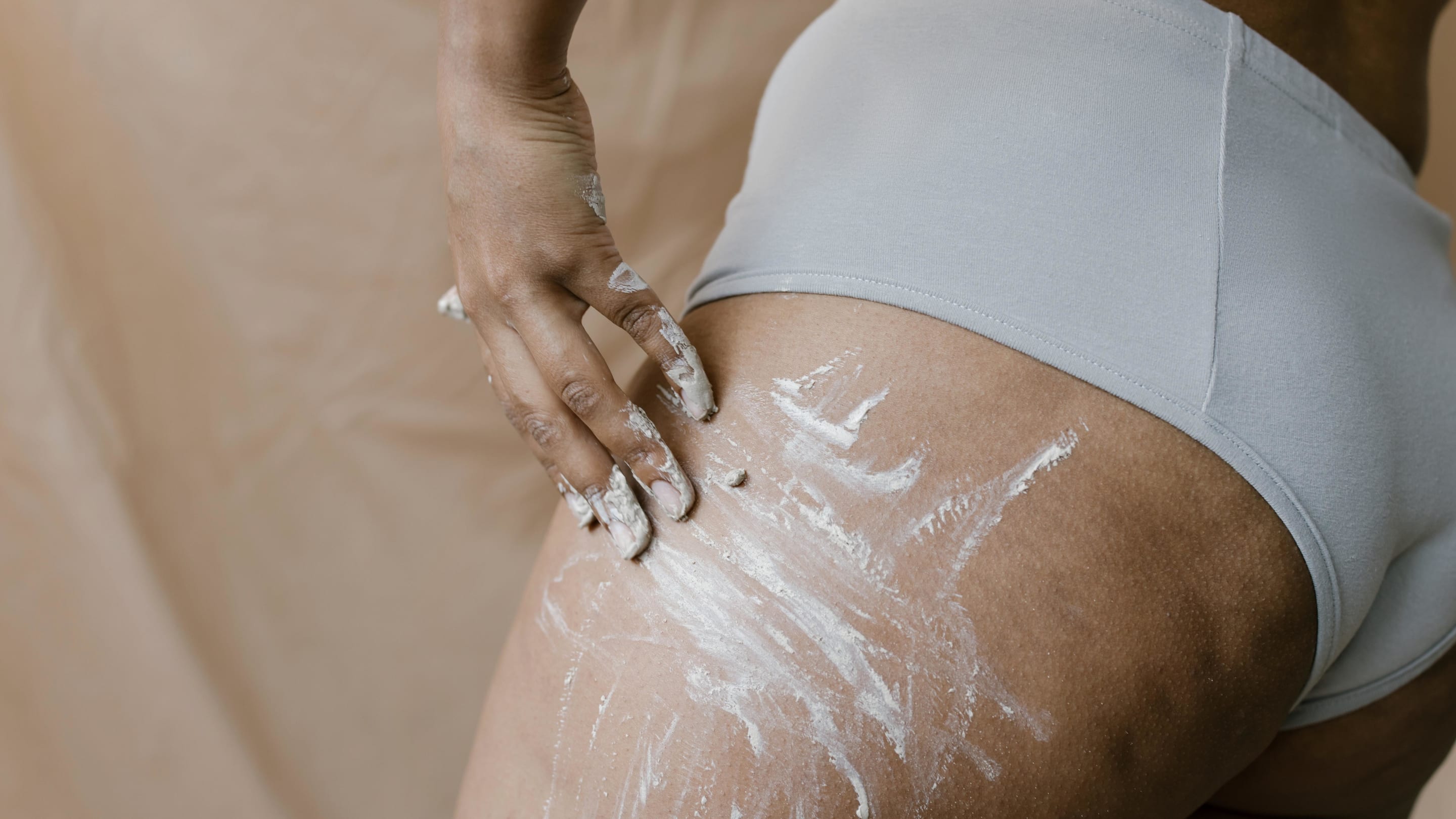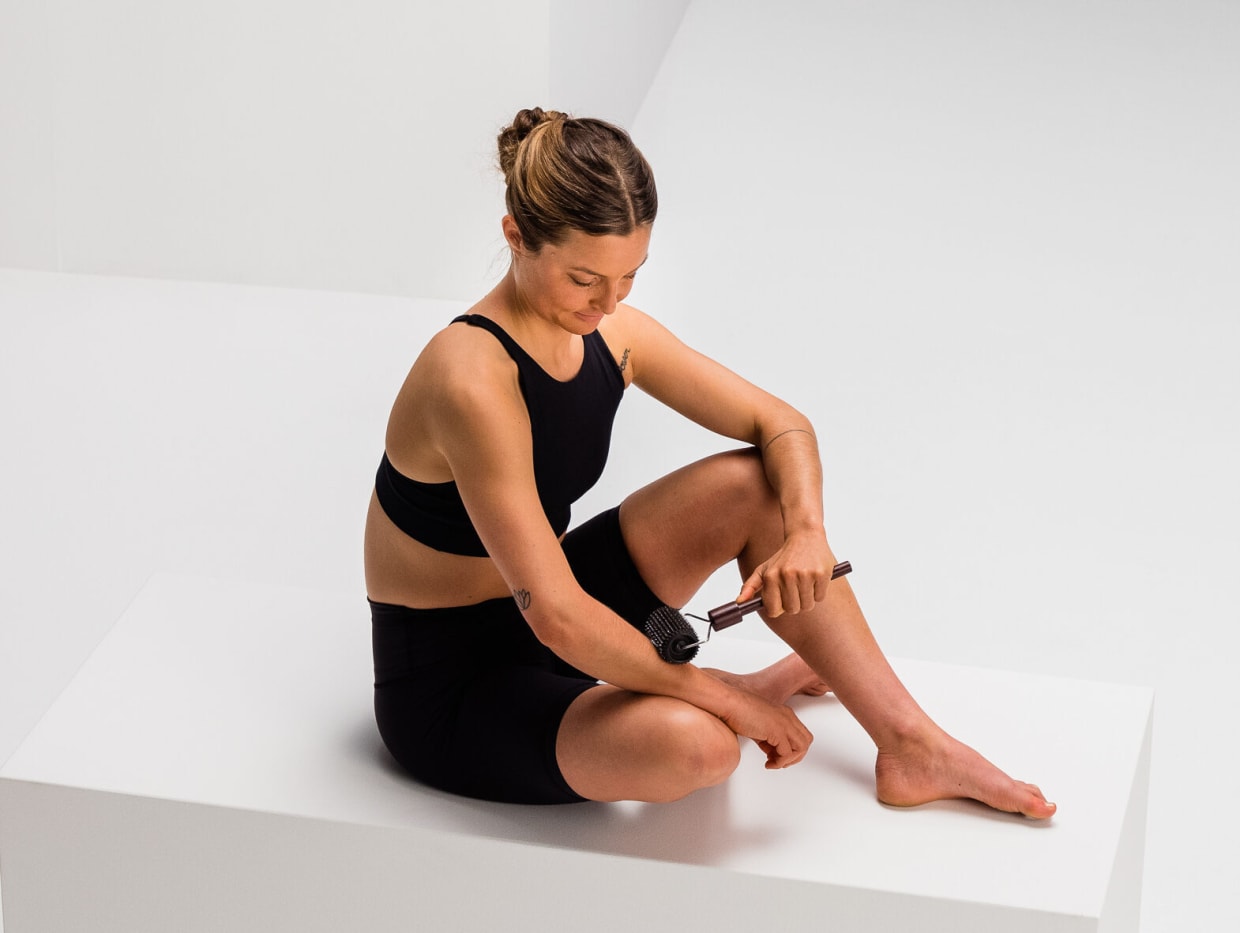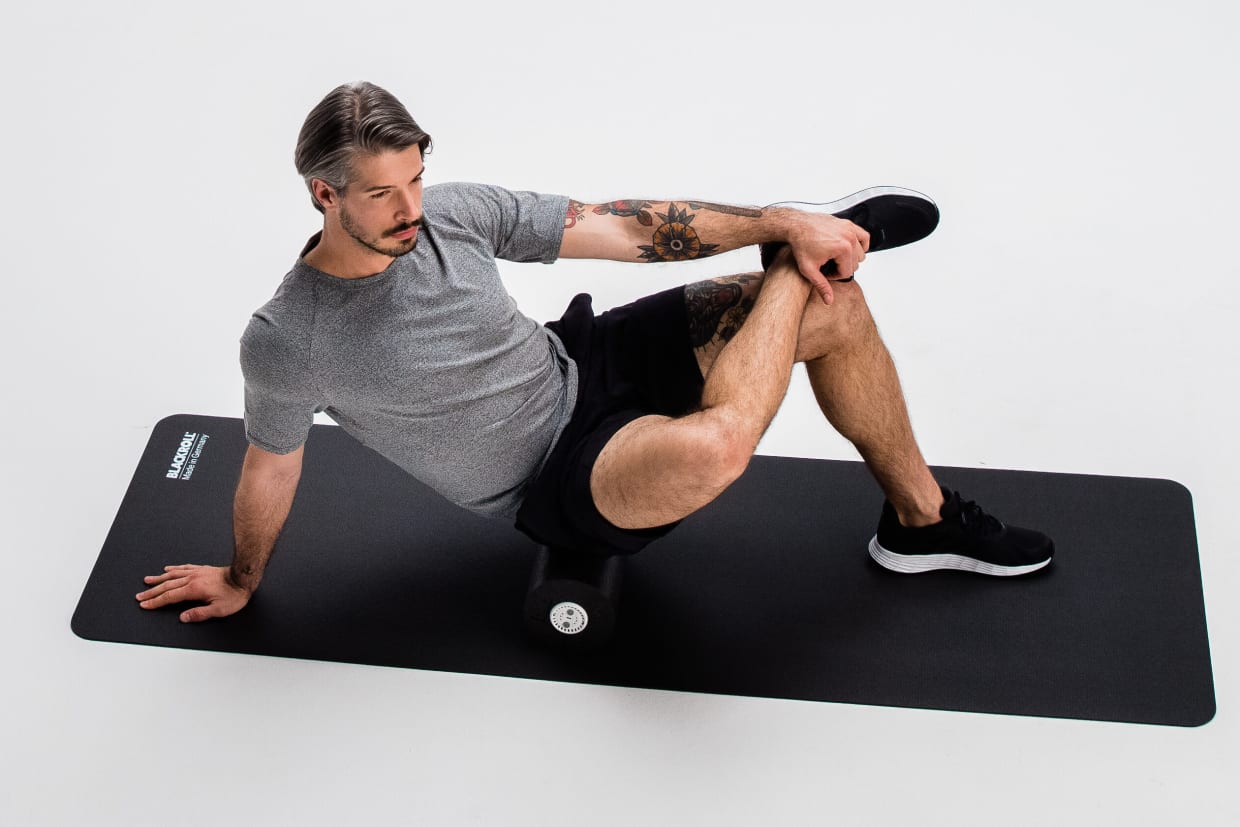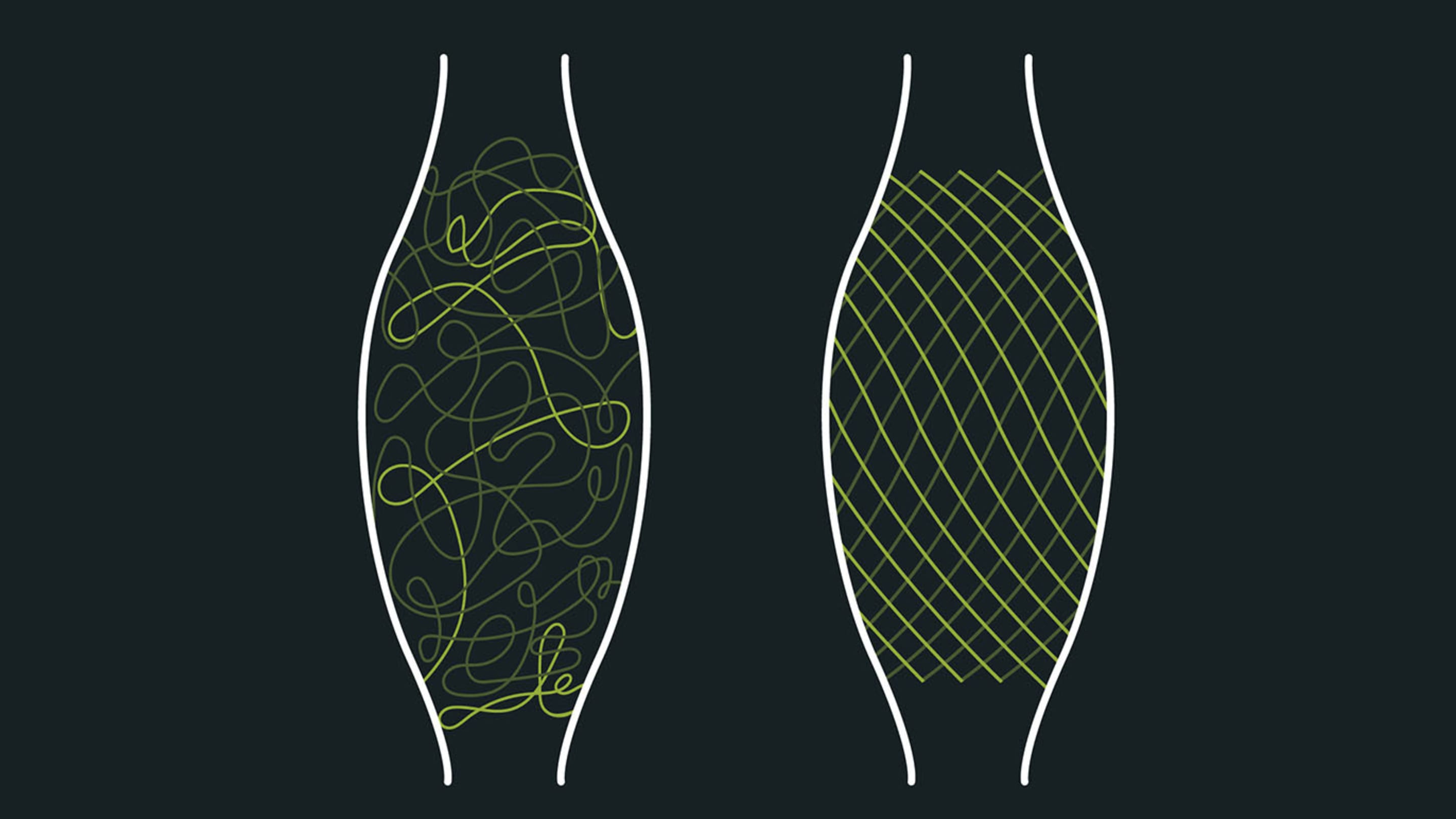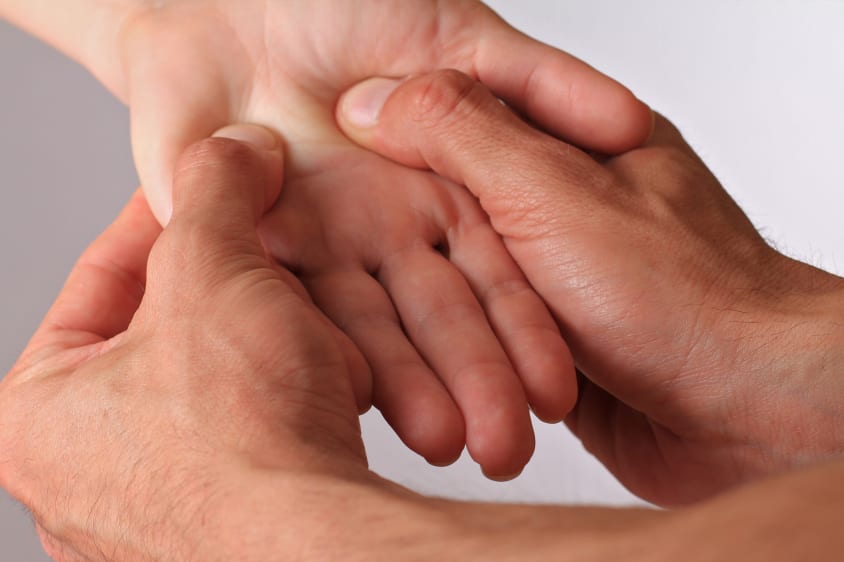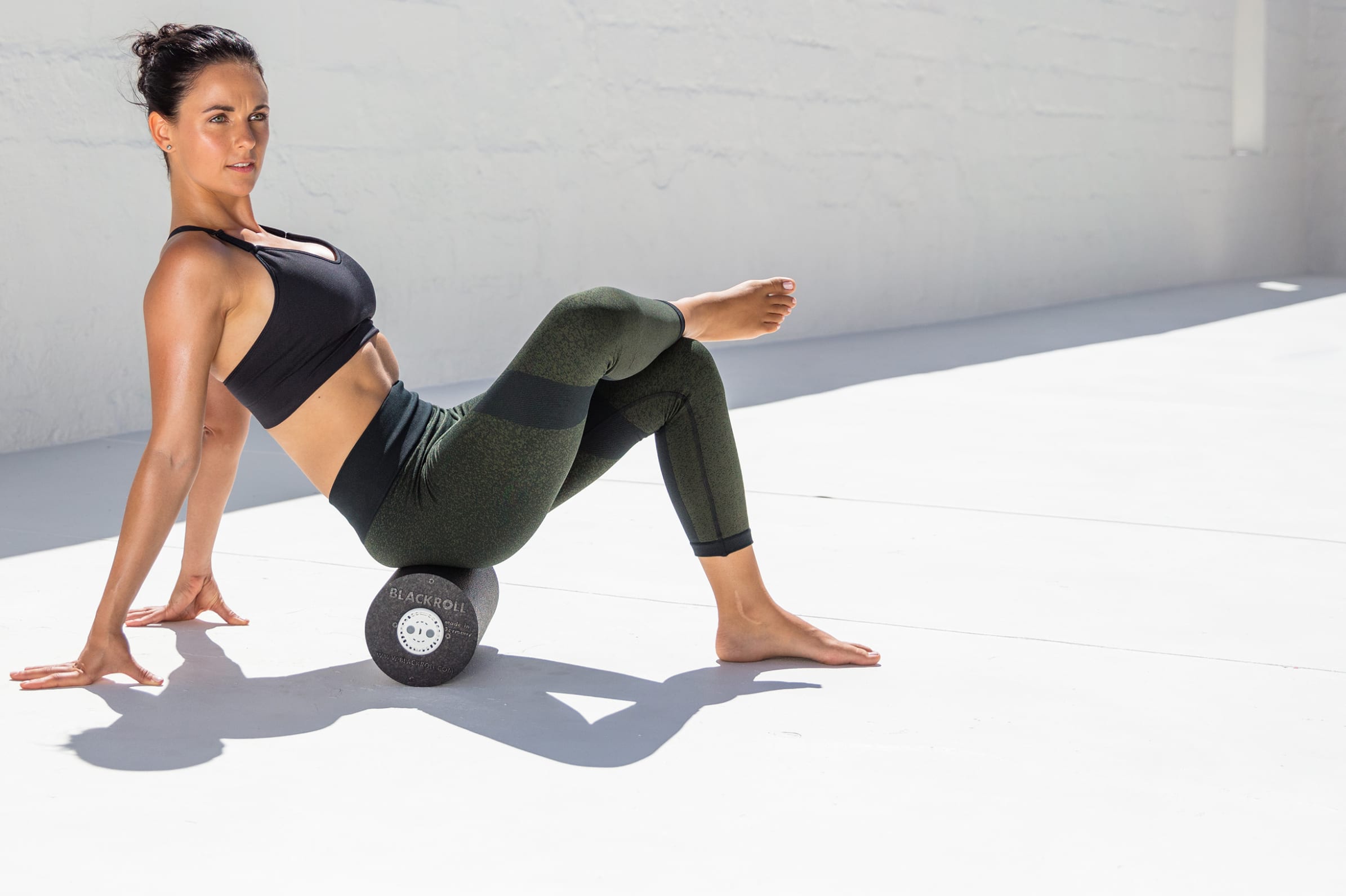
Does the foam roller help counteract cellulite?

80 to 90 percent of women over the age of 20 are affected by it. Women all over the world stand in front of their mirrors, despairing at the dimples in their skin. Food supplements, connective tissue weakness treatments, dry brushing, hormone treatments, cupping, essential oils, and other methods all promise to correct this “cosmetic flaw”. In this article we hope to answer the question as to whether or not fascia training with the BLACKROLL® can help prevent cellulite. However, first of all we will take a look at what is actually going on when cellulite occurs.
What is cellulite?
Fibrous bands of connective tissue run between the cells of our subcutaneous fatty tissue. Cellulite occurs when the skin that lies on top of these bands is pulled down into the deeper tissue. The result: the surface of the skin appears dimpled. Women tend to have less supportive connective tissue than men in some areas, e.g. on the bottom and on the thighs. When the collagen fibres deform the fascia, fatty deposits start to protrude. In addition, the connective tissue in men runs horizontally, whereas in women it is arranged vertically. Therefore, the fat is not the “problem”. It is the fasciae that run between our fatty tissue that cause the cellulite. This is why slim models are affected by the dimples just as much as curvier women.
If we are to address the topic of cellulite, we must take a closer look at our fasciae. All fasciae are linked together. A restriction in a certain area can limit another part of the body, and thus change its appearance. Thus, a structural change in the thigh can result in tension in the calf, back or even in the neck. Imagine this like a sheet that you lay out on your bed. If you pull the sheet down at one side, the surface of the sheet will change on the other side.
What impact does fascia training have on cellulite?
It almost seems too good to be true that massaging the body with a BLACKROLL® could make the cellulite on your stomach, legs and bottom disappear. We have already explained how our fasciae are responsible for the occurrence of cellulite. It therefore seems only logical that we could get rid of our cellulite with fascia training. But is this really the case?
Fact: fascia training improves the circulation and increases lymphatic flow. Every time we lie on the BLACKROLL®, we squeeze out our fascia like a sponge. This can then fill itself up with fresh fluid. From this, we can conclude that the occurrence of cellulite can be reduced with fascia training.
What has science got to say regarding the role of the fasciae in preventing cellulite?
There are actually no conclusive studies concerning the effectiveness of fascia training in preventing cellulite. We must therefore draw on personal experience.
Once the affected person has rolled over a foam roller, the appearance of the dimples changes, and they become fewer in number. One possible explanation for this is that the self-massage relieves tension in the fasciae, which allows the skin to lie flat underneath the skin. However, this effect does not last for long. In order to achieve sustained results, you would likely have to spend at least an hour per day on the foam roller. For most people this is presumably not feasible.
We arrive at the following conclusion: due to its effects on our connective tissue, fascia training could contribute to counteracting cellulite. However, this by no means represents a 100% effective solution.
Healthy vs. unhealthy fasciae
So how about a paradigm shift? A better question than “how do I get rid of my cellulite?” would be, “how do I keep my fasciae healthy?”.
Healthy fasciae are bendy, supple, have a sufficient supply of fluid, and support the function of the structures that they surround and pervade. If the fasciae are unhealthy, they contract and stick together, thus creating a host of problems. This can be accompanied by poor posture, limited mobility and strength, pain and feelings of discomfort. Even our quality of sleep can suffer. The condition of our fasciae influences everything in the body. This doesn’t mean that if we have healthy fasciae we will never have cellulite again. It simply means that we should pay more attention to this connective tissue that connects everything in our bodies together.
What are the causes of unhealthy fasciae?
Fasciae form our body and make a significant contribution to determining whether or not our skin is firm. If we want to keep our connective tissue supple, we must first ask ourselves the following question: What do our fasciae dislike, and what should we avoid with a view to making out skin look firmer?
Poor body structure and biomechanics
The way in which we move and the posture that we adopt for the majority of the day influence our structure. If we find ourselves in a biomechanically unfavourable position, this contributes to the matting of our fasciae.
Too little fluid in the body
A sufficient supply of fluid is essential when it comes to keeping the fasciae healthy, and the connective tissue firm. The slightest change in the quantity of bodily fluid in the spaces between the cells will alter the properties of the fascial tissue. This affects the way in which we move. How can you check whether you are sufficiently hydrated? It’s quite simple: your urine should be fairly close to the colour of the water that you are drinking.
Lack of mobility
Fasciae require one thing more than anything else if they are to remain healthy: movement. In order that blood can flow into all of the structures of your body, it must be stimulated. A diverse range of physical activities whereby your heart rate increases to 135-170 beats per minute is ideal. Remember the following formula:
A lot of varied movement = healthy fascia or healthy connective tissue
Continuous stress
The fascia reacts to stress by tensing up. This was demonstrated in studies conducted by fascia researcher, Robert Schleip. If our fasciae are permanently under tension, they become matted and the connective tissue looses its suppleness. If we want to keep our fasciae healthy, we must find the best way possible to manage our stress. For one person yoga or meditation may work, while another person might try a walk in the woods. Find an activity that allows your nervous system to take some time out from the permanent and continuous stress. Your fasciae will thank you for it.
Conclusion: Foam roller to counteract cellulite
To finish, we would like to clarify once more that cellulite is not an illness, nor an indication that there is something wrong with our connective tissue. In today’s world, cellulite is viewed as a “cosmetic flaw” and women strive to emulate the ideal that is a dimple-free posterior. However, cellulite has been around for thousands of years, and no-one every worried about it before. It was only in the mid-20th century that cellulite was labelled a “plague” by numerous fashion magazines. Since then, women all over the world have been despairing at the dimples in their skin.
Acceptance and positive self-esteem will have a better effect than any anti-cellulite cream. That said, it is of course worthwhile looking after the health of your fasciae. Reduced pain, enhanced performance, more energy and a better sense of general wellbeing are just some of the positive effects of a sustained fascial wellness regime. Firm connective tissue can thus be viewed as a pleasant side effect, but should not be your primary motivation.
